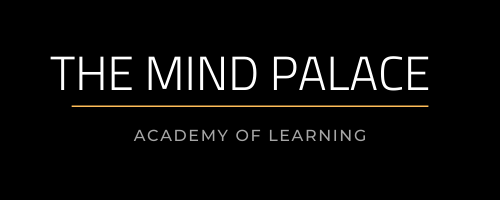The Periodic Table Song

The Periodic Table Song
“The Periodic Table Song” is often used as a fun and engaging way to introduce and reinforce the knowledge of the elements. It can be a useful tool for students or anyone who wants to become familiar with the names and symbols of the elements in the periodic table. There are several versions of the song available, so you can choose the one that suits your preferences and learning style.
(Verse 1)
There’s Hydrogen and Helium, then Lithium, Beryllium
Boron, Carbon everywhere, Nitrogen all through the air
With Oxygen so you can breathe, and Fluorine for your pretty teeth
Neon to light up the signs, Sodium for salty times
(Chorus)
Magnesium, Aluminum, Silicon, Phosphorus
Then Sulfur, Chlorine, and Argon, Potassium, and Calcium so you’ll grow strong
(Verse 2)
Scandium, Titanium, Vanadium, and Chromium, and Manganese
This is the Periodic Table, noble gases stable
Then we’ve got Palladium, Silver, and Platinum, then Gold and Mercury
Tellurium and Iodine and Xenon and then Caesium and…
(Bridge)
Barium is 56 and this is where the table splits
Where Lanthanides have just begun, Lanthanum, Cerium, and Praseodymium
(Verse 3)
Neodymium, Promethium, then 62’s Samarium, Europium, Gadolinium
Terbium, Dysprosium, Holmium, Erbium, Thulium, Ytterbium, Lutetium
(Chorus)
Hafnium, Tantalum, Tungsten, and then we’re on to Rhenium
Osmium and Iridium, Platinum, Gold to make you rich till you grow old
(Chorus reprise)
Mercury to lead, and then we’re all the way to 82
Bismuth, Polonium, Astatine would not behave
And then we end with Radon, Francium, and Radium
And Actinium, Thorium, Protactinium, Uranium, Neptunium, Plutonium, Americium, Curium, Berkelium, Californium
(Outro)
Einsteinium, Fermium, Mendelevium, Nobelium
Lawrencium, Rutherfordium, Dubnium, Seaborgium
Bohrium, Hassium, Meitnerium, Darmstadtium
Roentgenium, Copernicium, Nihonium, Flerovium
Moscovium, Livermorium, Tennessine, and Oganesson
Explanation of The Periodic Table Song
(Verse 1)
There’s Hydrogen and Helium, then Lithium, Beryllium
Boron, Carbon everywhere, Nitrogen all through the air
With Oxygen so you can breathe, and Fluorine for your pretty teeth
Neon to light up the signs, Sodium for salty times
This stanza introduces the first few elements of the periodic table. It starts with Hydrogen and Helium, which are the most basic and abundant elements in the universe. It then mentions elements like Lithium, Beryllium, Boron, Carbon, Nitrogen, Oxygen, Fluorine, Neon, and Sodium. These elements have various roles and characteristics: Hydrogen is essential for the formation of water, while Helium is used in balloons. Lithium is used in batteries, Carbon is the basis of all living organisms, and Oxygen is necessary for breathing. Fluorine is used in toothpaste for dental health, Neon is used in signs for vibrant lighting, and Sodium is found in salt, giving food a salty taste.
(Chorus)
Magnesium, Aluminum, Silicon, Phosphorus
Then Sulfur, Chlorine, and Argon, Potassium, and Calcium so you’ll grow strong
The chorus lists several elements: Magnesium, Aluminum, Silicon, Phosphorus, Sulfur, Chlorine, Argon, Potassium, and Calcium. Each of these elements plays a role in our lives. For example, Magnesium is important for muscle and nerve function, Aluminum is used in construction and packaging, Silicon is used in computer chips, Phosphorus is a vital component of DNA and energy molecules, Sulfur is used in fertilizers and matches, Chlorine is used to disinfect water, Argon is an inert gas used in light bulbs, Potassium is essential for proper cell function, and Calcium is crucial for bone and teeth health.
(Verse 2)
Scandium, Titanium, Vanadium, and Chromium, and Manganese
This is the Periodic Table, noble gases stable
Then we’ve got Palladium, Silver, and Platinum, then Gold and Mercury
Tellurium and Iodine and Xenon and then Caesium and…
This stanza introduces elements from Scandium to Caesium. Although not explained in detail, these elements have various applications. Scandium is used in lightweight alloys, Titanium is known for its strength and is used in aerospace applications, Vanadium is used in the production of steel, Chromium is used for its corrosion resistance, Manganese is used in steel production and batteries. The stanza then mentions elements like Palladium, Silver, Platinum, Gold, and Mercury, which are well-known precious metals. Additionally, Tellurium, Iodine, Xenon, and Caesium are mentioned, each having their own unique properties and uses.
(Bridge)
Barium is 56 and this is where the table splits
Where Lanthanides have just begun, Lanthanum, Cerium, and Praseodymium
The bridge briefly mentions Barium, which has an atomic number of 56, indicating its position on the periodic table. It also signifies the splitting of the table into two sections. It then mentions the Lanthanide series, which begins with Lanthanum, Cerium, and Praseodymium. The Lanthanide series is a group of elements that have similar properties and are commonly used in technologies like magnets, lasers, and lighting.
(Verse 3)
Neodymium, Promethium, then 62’s Samarium, Europium, Gadolinium
Terbium, Dysprosium, Holmium, Erbium, Thulium, Ytterbium, Lutetium
This stanza continues with the Lanthanide series, mentioning elements like Neodymium, Promethium, Samarium, Europium, Gadolinium, Terbium, Dysprosium, Holmium, Erbium, Thulium, Ytterbium, and Lutetium. These elements have various applications, including magnets, lasers, and nuclear reactors.
(Chorus)
Hafnium, Tantalum, Tungsten, and then we’re on to Rhenium
Osmium and Iridium, Platinum, Gold to make you rich till you grow old
The chorus is repeated, mentioning elements like Hafnium, Tantalum, Tungsten, Rhenium, Osmium, Iridium, Platinum, and Gold. These elements are associated with strength, durability, and their use in various industries.
(Chorus reprise)
Mercury to lead, and then we’re all the way to 82
Bismuth, Polonium, Astatine would not behave
And then we end with Radon, Francium, and Radium
And Actinium, Thorium, Protactinium, Uranium, Neptunium, Plutonium, Americium, Curium, Berkelium, Californium
The chorus is repeated once again, mentioning elements like Mercury, Lead, Bismuth, Polonium, Astatine, Radon, Francium, and Radium. These elements have unique properties and uses. The stanza ends with Actinium, Thorium, Protactinium, Uranium, Neptunium, Plutonium, Americium, Curium, Berkelium, and Californium, which are all radioactive elements with important applications in nuclear science and research.
(Outro)
Einsteinium, Fermium, Mendelevium, Nobelium
Lawrencium, Rutherfordium, Dubnium, Seaborgium
Bohrium, Hassium, Meitnerium, Darmstadtium
Roentgenium, Copernicium, Nihonium, Flerovium
Moscovium, Livermorium, Tennessine, and Oganesson
The outro is a rapid succession of elements, mentioning several more elements in quick succession. These elements include Einsteinium, Fermium, Mendelevium, Nobelium, Lawrencium, Rutherfordium, Dubnium, Seaborgium, Bohrium, Hassium, Meitnerium, Darmstadtium, Roentgenium, Copernicium, Nihonium, Flerovium, Moscovium, Livermorium, Tennessine, and Oganesson. These elements have been named after scientists, places, or have been discovered more recently.














